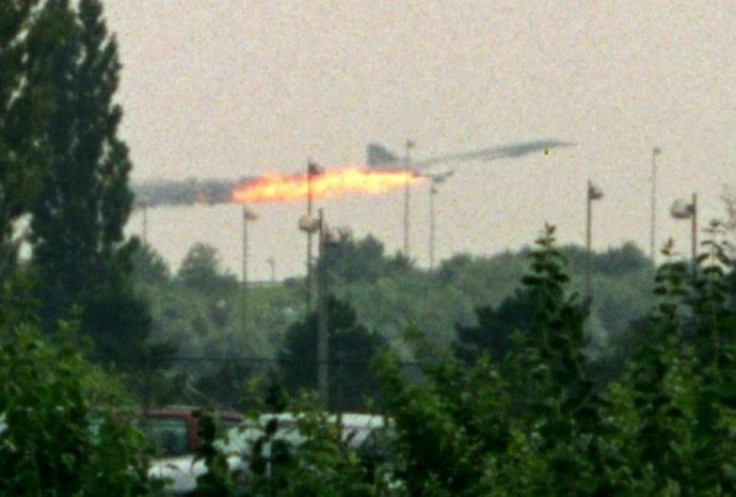Concorde air crash: French court holds Continental, mechanic guilty

A French court on Monday ruled that debris from a Continental Airlines plane had caused the tragedy that killed 113 people outside Paris 10 years ago while holding Continental Airlines and that one of its mechanics was guilty of involuntary homicide.
A small strip of metal fell off the Continental DC-10 that took off minutes earlier puncturing a tire of the New York-bound Air France Concorde jet as it accelerated on the runway, a report by French air accident investigators had concluded in 2002.
The tire disintegrated in seconds sending shards of rubber into the fuel tanks resulting in the plane crashing into a hotel near the airport with flames pouring from its undercarriage.
All 109 passengers including crew members were killed along with 4 people on the ground.
The court on Monday ordered Continental to pay civil damages of more than $1.3 million to Air France besides a fine of $265,000 while the mechanic was fined $2,650 with a 15-month prison sentence. Three other defendants involved in the jet’s design and certification were acquitted.
Continental said it will appeal against the ruling terming it ‘absurd’.
The court faulted the mechanic, John Taylor, 42, for using titanium, rather than a softer metal like aluminum, to construct a replacement piece called a wear strip for the DC-10. It also accused him of improperly attaching the strip to the aircraft, resulting in it falling onto the runway, a New York Times report said.
“To find that any crime was committed in this tragic accident is not supported either by the evidence at trial or by aviation authorities and experts around the world,” Nick Britton, a Continental spokesman was quoted as saying.
Three French engineers who headed the manufacturing portion of the supersonic Concorde, including Henri Perrier, 81, touted as ‘father’ of the Concorde supersonic jet, were cleared of all charges, while their employer, EADS-France, was held liable and was ordered to pay 30 percent of about $250,000 in damages to victims, a lawyer for the company said.
Perrier was an executive of Aérospatiale, the company that built it. Jacques Hérubel, a former senior engineer at Aérospatiale and Claude Frantzen, formerly of the French airline regulator that certified the plane’s airworthiness were the other two cleared of the charges.
Judge Dominique Andréassier presided over the trial in Pontoise, northwest of Paris. A lawyer for Continental, Olivier Metzner, argued at the trial that investigators had disregarded accounts of more than 20 witnesses who said the plane appeared to have caught fire at a point on the runway several yards before it reached the metal strip.
The $1.3 million in damages awarded was far less than the nearly $20 million the French airline had sought, New York Times reported. In 2001, Air France had reached a $150-million settlement with the families of the victims, most of whom were German citizens.
The Concorde supersonic jet first took to the skies in 1969 and it became an emblem of trans-Atlantic luxury travel. It flew at twice the speed of sound and a Paris-New York crossing took less than four hours while its London-New York time was just about three-and-a-half hours.
The crash of Air France Flight 4590 was the only fatal accident involving the Concorde, leading to the shutdown of commercial aviation's fastest jet. Carriers Air France and British Airways retired the Concorde in 2003 as its commercial operation had become a financial burden for both the carriers.
© Copyright IBTimes 2024. All rights reserved.











